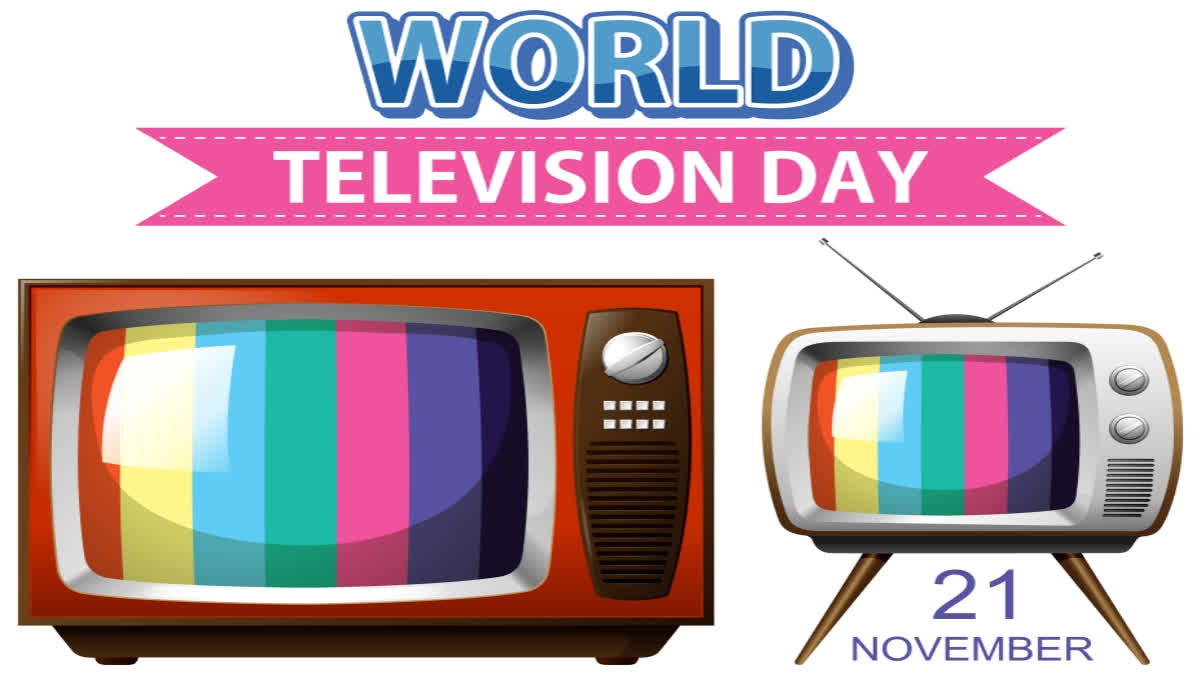Hyderabad: Every year, we observe World Television Day on November 21, which serves as a tribute to television's significance beyond an electronic device. The observance marks the device’s role as a pivotal source of entertainment and the leading platform for video consumption. It also marks the United Nations’ proclamation of November 21 as World Television Day to commemorate the date on which the first World Television Forum was held in 1996. This day also serves as a reminder of how television has become a sign of globalisation.
Theme- The theme for this year's World Television Day is "Accessibility", which highlights the importance of broadcasting, quality content promotion, and utilising television for positive social change, education, and global connectivity.
History- The celebration of World Television Day can be traced back to 1996 when the United Nations observed this day for the first time, they discussed the global importance of television and that was the time when the United Nations General Assembly(UNGA) decided to celebrate this day every year on November 21. Initially invented by Scottish engineer John Logie Baird in 1924, television's introduction in India occurred on September 15, 1959.
Significance- World Television Day recognises television as a symbol of communication and globalisation in today's world. It emphasises the impact of television on decision-making, raising awareness about conflicts, peace, and economic and social issues.
The day promotes local and global gatherings to highlight television's role in communication and globalisation by uniting writers, journalists, bloggers, and media professionals in its celebration. Additionally, it signifies the commitment of governments and news organisations to deliver unbiased information in an era of questionable social media content.
Television in India-Television arrived in Delhi as part of a collaboration with UNESCO, offering programs twice a week for an hour a day on various societal themes such as community health, traffic, road sense, citizens' duties and rights.
India expanded the one hour broadcast in 1961 to include a School Educational Television (STV) project. The second television station opened in Bombay, in 1972, was seen as the first major expansion of television in India. Next ones were opened in Srinagar, Amritsar, in the following year. Two years later, stations were set up in Kolkata, Chennai and Lucknow.
For about 17 years, the television broadcast was on a limited hourly basis and the transmission remained in black and white. The Satellite Instructional Television Experiment (SITE) which was conducted between August 1975 and July 1976, is considered to be the first of the three ignition points that triggered the growth of television in India. "The experiment used a satellite to broadcast educational programmes to villages across six states," Prof Sanjay Kachot, who teaches Journalism wrote in a paper.
"The objective was to use television for development, though entertainment programmes were also included. It actually brought television closer to the masses."
The advent of the INSAT-1A, the first of the country's domestic communications satellites which became operational in 1982, helped network all regional stations of Doordarshan, which laid the framework now known as universal broadcast. For Doordarshan, it came to be known as "National Programme'' as it would be uploaded from Delhi to all other stations and broadcast. The colour broadcasts came into being in November 1982 when the country hosted the Asian Games and it was the first event to be covered in colour and broadcast in colour across India by the government.
10 interesting facts about Television
- Paul Nipkow, a German engineer, created the first mechanical television in 1884.
- Vladimir Zworykin created the first electrical television in 1929.
- The United States saw the first commercial colour television transmission in 1951.
- In 1950, Eugene Polley created the first remote control.
- The 1952 sitcom "Our Miss Brooks" was the first to air in colour on television.
- "Camel News Caravan," the first news program on television, debuted in 1948.
- "Today is Ours" was the first soap opera to air on television, debuted in 1946.
- "Little Women," the first television miniseries, debuted in 1970.
- "Candid Camera," the first reality show on television, debuted in 1948.
- "Video Killed the Radio" was the first music video to air on television.



